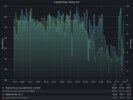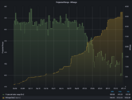4 month old RWD, 8000km showing 433km @ 100%.
Charging habits are not regular as I charge at work, but usually 100% every 1-2 weeks. Mostly level 2 charging with some supercharging on road trips. If I do have to DC charge I don't precondition to keep the rate low (I hate it when the car charges too quickly anyway).
I am far from a battery expert, but my uninformed opinion is that with the 5% top buffer on the LFP, charging to 100% shouldn't be too harmful. I just do it once a week or so and forget about it, although I do try and drive it right away if possible. I'll typically try and keep the car between 30-90% at other times, as long as it is convenient.
TLDR; don't overthink it.




